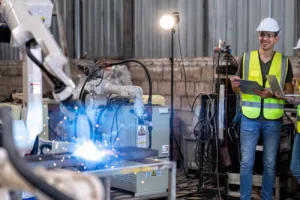Welcome to our comprehensive guide on Post Weld Heat Treatment (PWHT). In this article, we will delve into the intricacies of PWHT, its significance in the welding process, its methods, and its various applications in different industries.
Understanding pwht
Post Weld Heat Treatment, commonly referred to as PWHT, is a heat treatment process performed on a welded component or structure after the welding process is complete. The primary purpose of PWHT is to relieve residual stresses and minimize the risk of cracking that may occur due to the heat-affected zone formed during welding.
Importance of PWHT
PWHT plays a crucial role in enhancing the mechanical properties of the welded joints. It helps in improving the toughness and ductility of the weldment, making it less susceptible to brittle fracture. Additionally, PWHT aids in reducing the distortion that can arise from welding and contributes to the overall stability of the welded structure.
Methods of pwht
There are several methods of performing PWHT, each tailored to specific materials and applications. Some common methods include:
- Conventional Heating: Involves using furnaces or ovens to heat the welded component uniformly to the desired temperature, followed by controlled cooling.
- Induction Heating: Uses electromagnetic induction to heat the material, offering rapid and localized heating.
- Resistance Heating: Utilizes electrical resistance to generate heat, suitable for components with complex shapes.
Temperature and Duration
The temperature and duration of PWHT are critical factors that depend on the material being welded, its thickness, and the specific requirements of the project. Proper monitoring and adherence to recommended temperature profiles ensure optimal results.
Applications of pwht
PWHT finds applications in various industries:
- In the Oil and Gas Sector: PWHT is used to relieve stresses in pipelines, pressure vessels, and storage tanks, ensuring the integrity of these critical components.
- In Aerospace: PWHT is employed in the manufacturing of aircraft components, where precision and reliability are paramount.
- In Power Generation: PWHT helps maintain the structural stability of boilers, turbines, and other high-temperature equipment.
Quality Assurance
Proper documentation and testing are essential aspects of PWHT. Non-destructive testing methods, such as radiography and ultrasonic testing, are often used to ensure the effectiveness of the heat treatment process and the integrity of the welds.
Faqs about pwht
Q: What is the main goal of PWHT?
A: The primary goal of PWHT is to relieve residual stresses and enhance the mechanical properties of welded components.
Q: Is PWHT mandatory for all welded structures?
A: No, the necessity of PWHT depends on factors like material, welding process, and intended application. Consulting relevant codes and standards is crucial.
Q: Can improper PWHT lead to issues?
A: Yes, improper PWHT can lead to problems like inadequate stress relief, reduced mechanical properties, and even weld failure.
Q: How is the cooling process managed after PWHT?
A: Controlled cooling is essential after PWHT to prevent rapid temperature changes that could impact the material’s properties. Furnace cooling or air cooling are common methods.
Q: Can PWHT be done on any material?
A: While PWHT is applicable to a wide range of materials, it is crucial to consider material-specific guidelines and limitations.
In conclusion, Post Weld Heat Treatment is a vital process in welding, contributing to the durability and reliability of welded structures across various industries. Its significance in stress relief and property enhancement cannot be understated, making it an integral part of the welding workflow.
Zobacz także:






